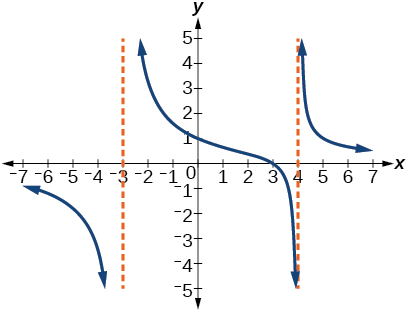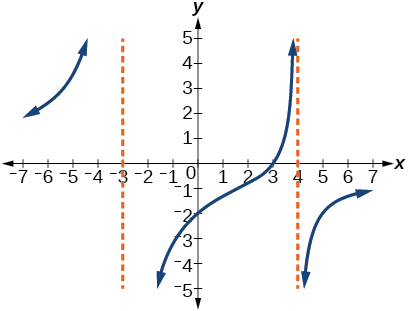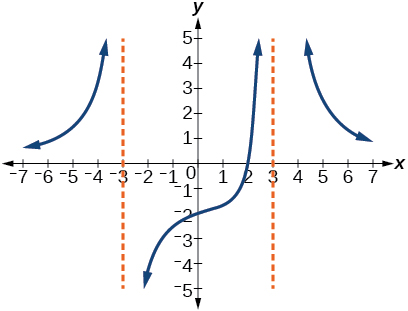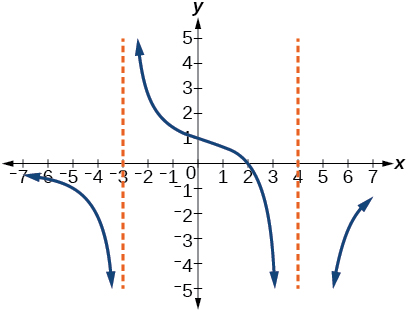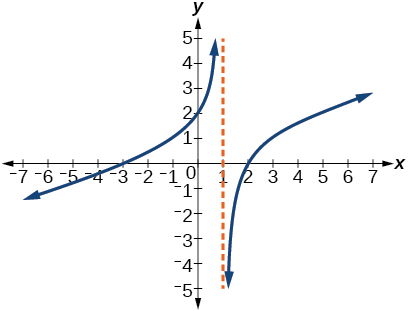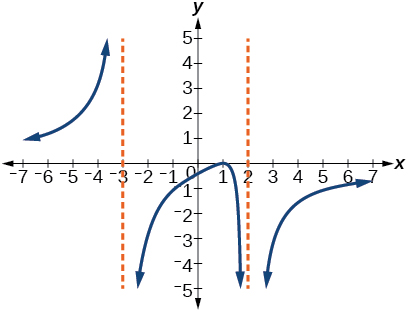3.9e: Exercises - Rational Functions
( \newcommand{\kernel}{\mathrm{null}\,}\)
A: Conceptual Questions
Exercise 3.9e.A
1. What is the fundamental difference in the algebraic representation of a polynomial function and a rational function?
2. What is the fundamental difference in the graphs of polynomial functions and rational functions?
3. If the graph of a rational function has a removable discontinuity, what must be true of the functional rule?
4. Can a graph of a rational function have no vertical asymptote? If so, how?
5. Can a graph of a rational function have no x-intercepts? If so, how?
- Answers to odd exercises.
-
1. The rational function will be represented by a quotient of polynomial functions.
3. The numerator and denominator must have a common factor.
5. Yes. The numerator of the formula of the functions would have only complex roots and/or factors common to both the numerator and denominator.
B: Find Domain of Rational Functions
Exercise 3.9e.B
★ Find the domain of the rational functions.
| 7. f(x)=x+1x2−1 | 8. f(x)=x−1x+2 | 9. f(x)=x2+4x−3x4−5x2+4 | 10. f(x)=x2+4x2−2x−8 |
- Answers to odd exercises.
-
7. All reals except that x≠−1,1
9. All reals except that x≠−1,−2,1,2
C: Find domain, vertical asymptotes, holes, and horizontal asymptotes
Exercise 3.9e.C
★ For each function, find (a) the domain, vertical asymptotes and holes, and (b) the horizontal asymptote and points of intersection of the HA with the function.
|
|
|
|
★ Identify the removable discontinuity ("hole").
|
|
|
|
- Answers to odd exercises.
-
11. Domain is all reals; no VA, No holes; H.A. at y=23, No intersection;
13. Domain is all reals x≠1,−25, V.A. at x=−25; Hole at (1,27); H.A. at y=0; No intersection;
15. Domain is all reals x≠4,−9, V.A. at x=4,−9, No holes; H.A. at y=0; Intersection at (0,0);
17. Domain is all reals x≠0,4,−4, V.A. at x=0,4,−4, No holes; H.A. at y=0; Intersection at (43,0);
19. Domain is all reals x≠5,−5, V.A. at x=5, Hole at (−5,−110); H.A. at y=0; No intersection;
21. Domain is all reals x≠13, V.A. at x=13, No holes; H.A. at y=−23; No intersection;
25. (2,4) 27. (2,5) 29. (−1,1)
D: Describe local and end behaviour
Exercise 3.9e.D
★ Describe the local and end behavior of the functions.
|
|
|
- Answers to odd exercises.
-
31. Local behavior: x→−12+,f(x)→−∞,x→−12−,f(x)→∞
End behavior: x→±∞,f(x)→1233. Local behavior: x→6+,f(x)→−∞,x→6−,f(x)→∞
End behavior: x→±∞,f(x)→−235. Local behavior: x→−52−,f(x)→−∞,x→−52+,f(x)→∞
x→13−,f(x)→∞,x→13+,f(x)→−∞, End behavior: x→±∞,f(x)→13
E: Find Slant Asymptote and its intersection with the function
Exercise 3.9e.E
★ For each function, (a) Find the slant asymptote of the functions, (b) Determine any points of intersection between the function and this asymptote.
|
|
40. f(x)=x2+5x+4x−1 |
- Answers to odd exercises.
-
37. y=2x+4 No point of intersection 39. y=2x Intersection at (0,0)
F: Find Intercepts
Exercise 3.9e.F
★ Find the x- and y-intercepts for the functions.
|
43. f(x)=xx2−x 44. f(x)=x+5x2+4 |
45. f(x)=x2+x+6x2−10x+24 |
46. f(x)=x2+8x+7x2+11x+30 |
48. f(x)=94−2x23x2−12 |
- Answers to odd exercises.
-
43. none 45. x -intercepts none, y -intercept (0,14)
G: Identify attributes and sketch
Exercise 3.9e.G
★ Find the (a) vertical asymptotes, (b) coordinates of any holes, (c) end behaviour asymptote (horizontal or slant), (d) coordinates of any points of intersection of the function with the end behaviour asymptote, (e) coordinates of any x-intercepts, (f) coordinates of the y-intercept. Use that information to sketch a graph.
|
|
|
|
|
|
|
|
|
|
|
|
|
|
- Answers to odd exercises #51-67. More graphs at the end of this section
-
51. (32,∞)
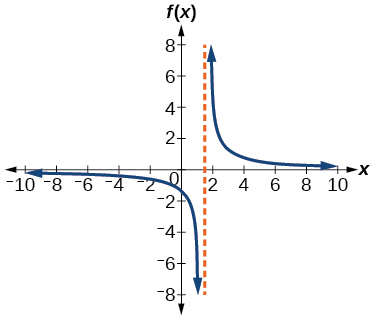
53. V.A. x=−4, H.A. y=2; (32,0); (0,−34)
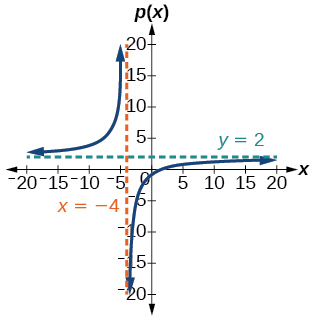
55. V.A. x=2, H.A. y=0, (0,1)
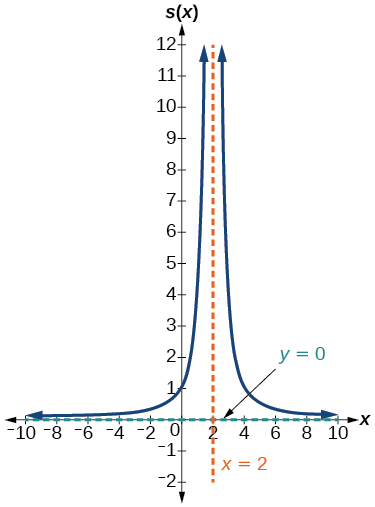
57. (−2,1)∪(4,∞)
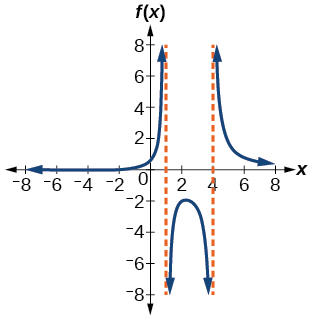
59.
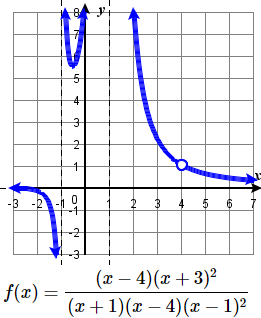
61.
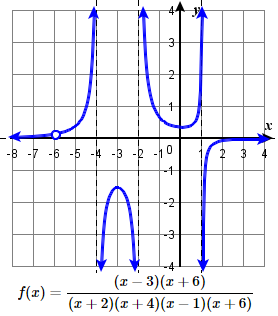
63. V.A. x=−4, x=43, H.A. y=1; (5,0); (−13,0); (0,516)
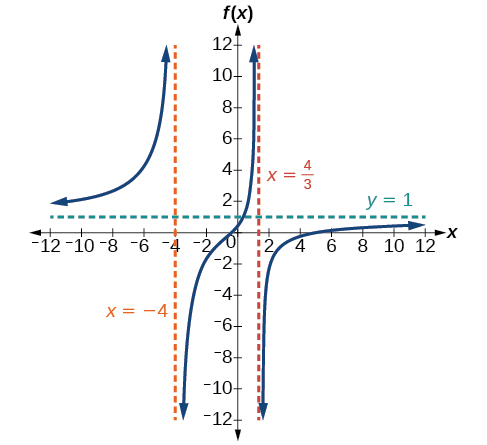
65. V.A. x=−1, H.A. y=1; (−3,0); (0,3)
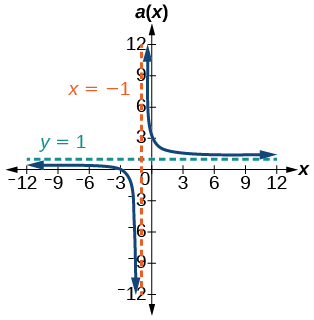
67. V.A. x=4, S.A. y=2x+9; (−1,0); (12,0); (0,14)
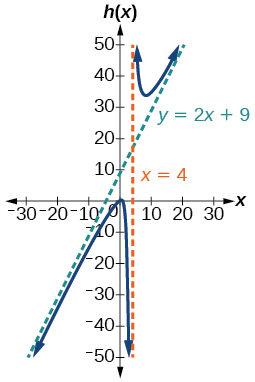
H: Construct an Equation from a Description
Exercise 3.9e.H
★ Write an equation for a rational function with the given characteristics.
- Vertical asymptotes at x=5 and x=−5, x-intercepts at (2,0) and (−1,0) , y -intercept at (0,4)
- Vertical asymptotes at x=−4 and x=−1,x -intercepts at (1,0) and (5,0),y -intercept at (0,7)
- Vertical asymptotes at x=−4 and x=−5,x -intercepts at (4,0) and (−6,0), Horizontal asymptote at y=7
- Vertical asymptotes at x=−3 and x=6,x -intercepts at (−2,0) and (1,0), Horizontal asymptote at y=−2
- Vertical asymptote at x=−1, Double zero at x=2,y -intercept at (0,2)
- Vertical asymptote at x=3, Double zero at x=1,y -intercept at (0,4)
- Answers to odd exercises.
-
105. y=50(x−2)(x+1)(x−5)(x+5) 107. y=7(x+6)(x−4)(x+5)(x+4) 109. y=(x−2)22(x+1)
I: Construct an Equation from a Graph
Exercise 3.9e.I
★ Use the graphs to write an equation for the function.
|
111.
|
112.
|
113.
|
|
114.
|
115.
|
116.
|
|
117.
|
118.
|
- Answers to odd exercises.
-
111. y=4(x−3)(x−4)(x+3) 113. y=27(x−2)(x+3)(x−3)2
115. y=(x+3)(x−2)3(x−1) 117. y=−6(x−1)2(x+3)(x−2)2
J: Use tables to show behaviour
Exercise 3.9e.J
★ Make tables to show the behavior of the function near the vertical asymptote and horizontal asymptote
|
|
|
|
|
- Answers to odd exercises.
- 121.
Vertical asymptote x=2
Horizontal asymptote y=02.01 2.001 2.0001 1.99 1.999 100 1,000 10,000 –100 –1,000 10 100 1,000 10,000 100,000 .125 .0102 .001 .0001 .00001
123.
Vertical asymptote x=−4
Horizontal asymptote y=2–4.1 –4.01 –4.001 –3.99 –3.999 82 802 8,002 –798 –7998 10 100 1,000 10,000 100,000 1.4286 1.9331 1.992 1.9992 1.999992
125.
Vertical asymptote x=−1
Horizontal asymptote y=1–.9 –.99 –.999 –1.1 –1.01 81 9,801 998,001 121 10,201 10 100 1,000 10,000 100,000 .82645 .9803 .998 .9998 .99998
G: Additional Answers for section G (#71-101)
Exercise 3.9e.A
Graphs of odd-numbered exercises #71-101 in section G
- Additional answers to odd exercises.
-
69. V.A. x=−2, x=4, H.A. y=1, (1,0); (5,0); (−3,0); (0,−1516)
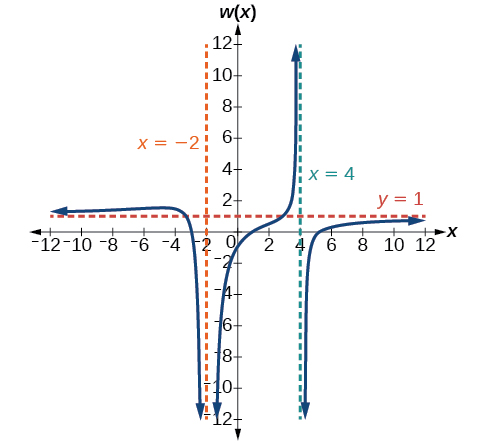
71.
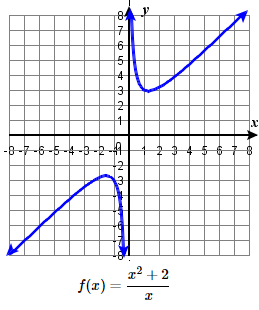
73.
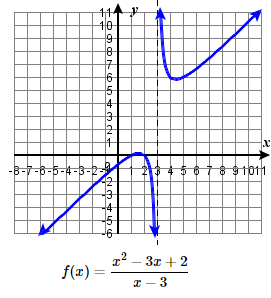
75.
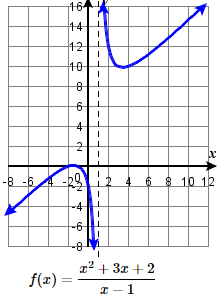
77.

79.
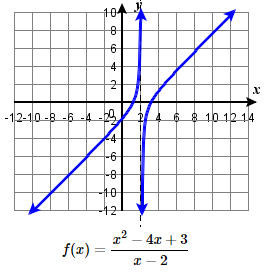
81.
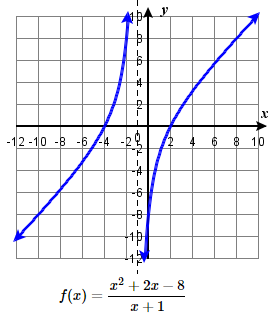
83.
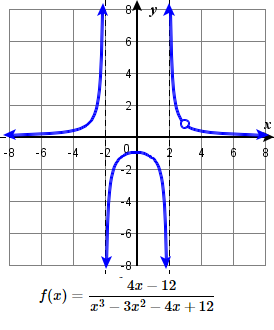
85.
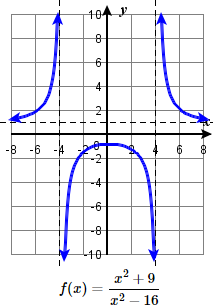
87.

89.
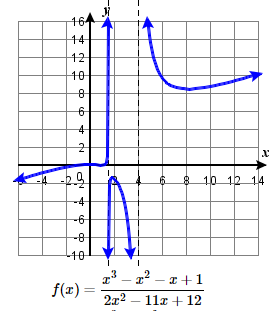
91.
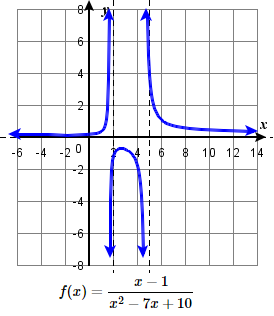
93.
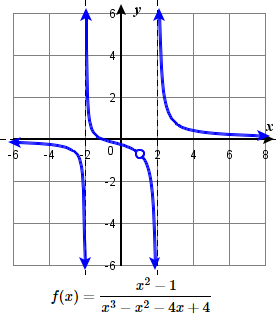
95.
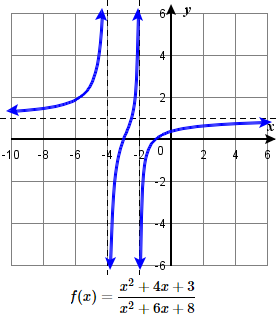
97.
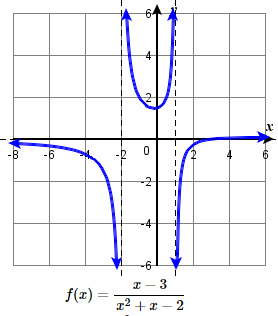
99.

101.
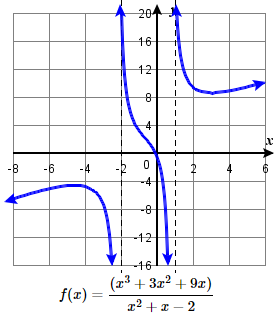
★



